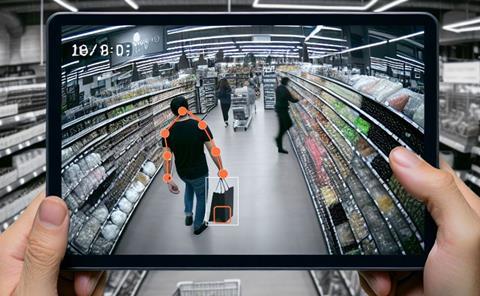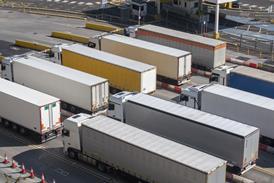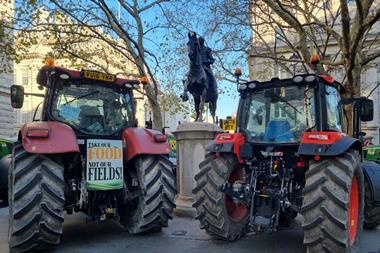
AI analysis of 1,000 supermarket shoplifting incidents, captured on CCTV across several major supermarkets, has found 80% of stolen items were hidden in clothing or bags before reaching the checkout.
The study – by Tesco-backed technology firm Trigo – “uncovered systematic concealment on an unprecedented scale” with only a fifth of stolen items reaching the checkout in plain view.
According to Trigo – which works with Tesco, Rewe, Aldi Nord and Netto – the findings prove retailers’ current focus on using AI for ‘non-scan detection’ at self-checkouts is “fundamentally misaligned with how theft of commonly stolen products actually occurs”.
The most frequently stolen categories, according to the study – which analysed verified theft incidents from several major retailers – were beverages (in 22% of cases), fresh produce (19%), and bakery items (10%).
Theft peaks on weekday afternoons (46.6%) and evenings (30.4%), the study found, with Thursday afternoons alone accounting for 18.4% of incidents. Saturdays see the lowest rates of theft, with 4.6% of products stolen on the day.
“Most retailers today are either discovering what was stolen after the fact through inventory audits, or at best, catching visible theft at checkout,” said Daniel Gabay, CEO of Trigo.
“As theft tactics evolve beyond simple scanning avoidance to systematic concealment, the question for the industry becomes whether traditional security infrastructure can adapt, or whether AI-powered tracking from shelf to exit will become the new standard,” he added.
Several retailers have announced trials or rollouts of AI systems that monitor footage of shoppers at self-checkouts, to catch thieves. Exclusive research for The Grocer earlier this year found 37% of UK shoppers had failed to scan at least one item when using self-checkouts.
In April, Home Bargains revealed it was tackling theft by deploying AI-enabled cameras capable of detecting items that pass a checkout without being scanned in two stores trials. In July, Lidl was revealed to be trialling cameras at self-checkouts in two London store that can spot when a shopper fails to scan an item and play the footage back to them.
Trigo said the findings – which it said provided ”one of the most comprehensive views to date of how theft takes place across the store environment” – should “mark a shift” in how the industry understands shrinkage, given “the majority of losses happen long before the checkout point”. Tesco’s Just Walk Out, checkout-free store tech partner – in which Tesco announced an equity investment in 2019 – earlier this year said it had adapted its technology to identify what items a shopper picks up and compares it against what they scan at a self-checkout, “flagging mismatches in real time”.
“By tapping into existing CCTV cameras, computer vision AI technology makes it possible to track frequently targeted products in real time from shelf to checkout, delivering total store coverage,” Gabay said.
“Whether a shopper hides an item under their jacket, or skips scanning altogether – AI will detect it. As retailers look ahead, this kind of end-to-end visibility could define the future of loss prevention – where every item, in every aisle, is accounted for,” he added.
Of thefts at self-checkouts, the study found that thieves “use a range of tricks to avoid paying”. The most common among them leaving items in the basket or bagging area without scanning (31.7%), performing a ‘fake scan’ where an item is passed over the scanner but not registered (27.3%), or deliberately holding products back and not scanning them at all (14.1%).
“This behaviour is particularly difficult for staff to detect as it often appears subtle and can easily be mistaken for an honest error,” Trigo said.



















No comments yet